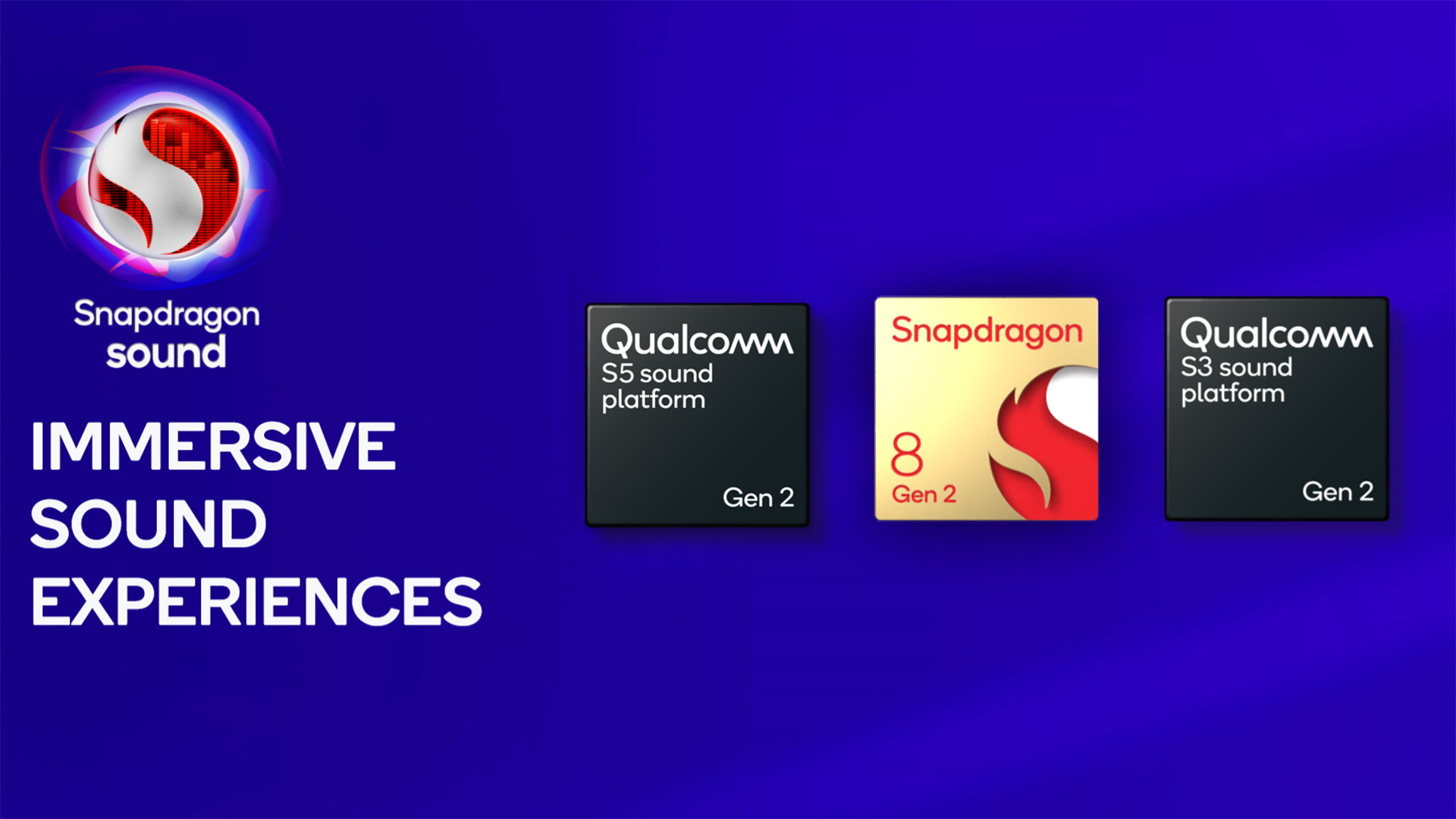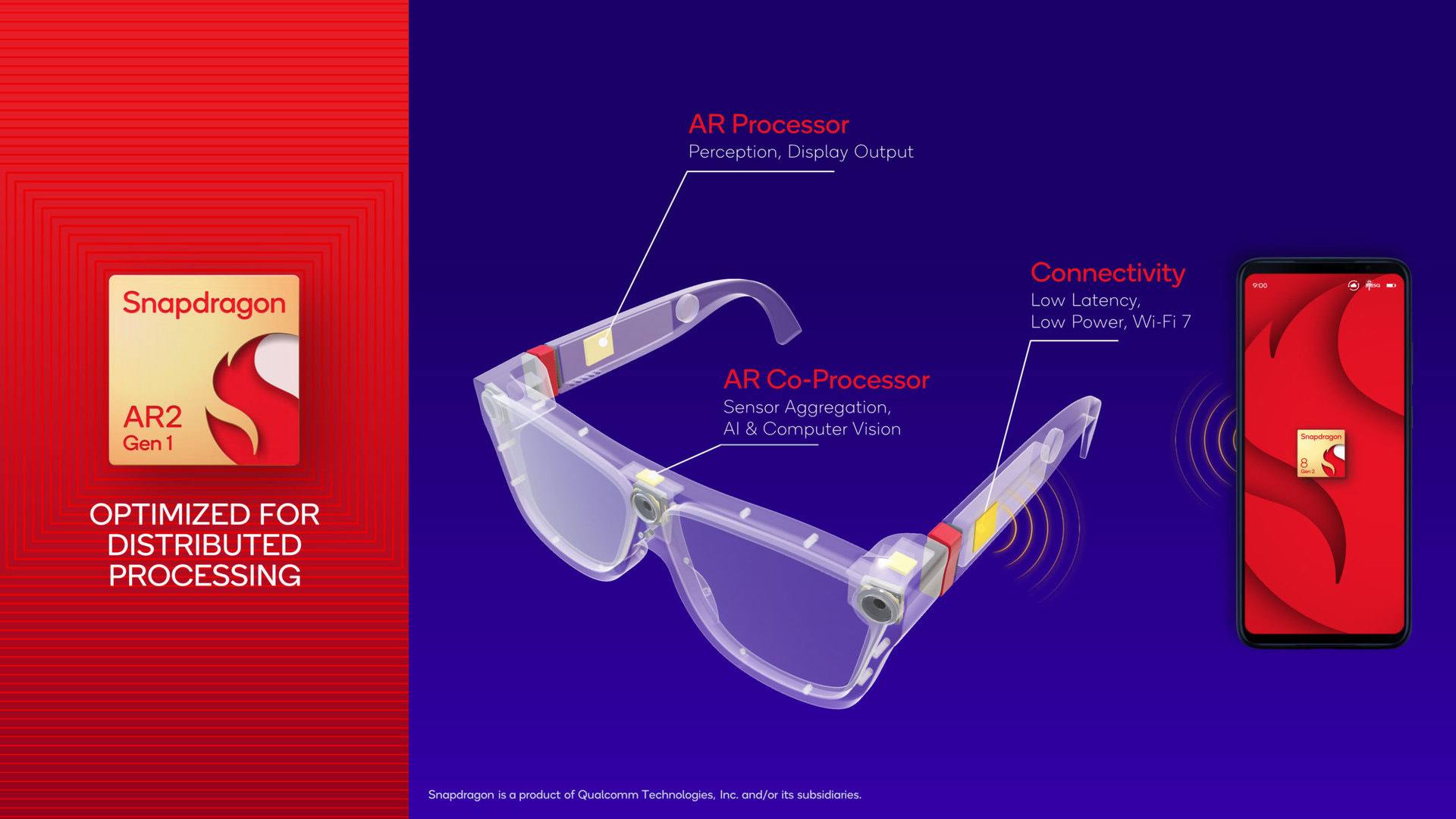Affiliate links on Android Authority may earn us a commission. Learn more.
Qualcomm doubles down on augmented reality, spatial audio updates, more

- The company made some new hardware announcements during day 2 of the Qualcomm Snapdragon Summit.
- These include the AR2 Gen 1 for augmented reality hardware and the second-gen Snapdragon S5 and S3 sound platforms.
- The company also announced Oryon, the new name for its cross-platform CPU core.
The annual Snapdragon Summit is happening right now in Hawaii. Yesterday was the big day with a keynote address and the launch of the new Snapdragon 8 Gen 2 processor. Today, though, the company has even more to share.
The company launched a variety of products, including the Qualcomm Snapdragon AR2 Gen 1, the second-gen S5 and S3 sound platforms, and revealed the name of its next-gen, cross-platform CPU core known as Oryon. Let’s jump in!
Qualcomm Snapdragon S5 Gen 2 and S3 Gen 2
Inside some headphones and earbuds, you’ll find Qualcomm chips. Newer models of these audio devices come with the Snapdragon Sound branding, which Qualcomm wants to be as familiar as THX, Intel Inside, etc. With today’s announcement, the company is expanding its portfolio, enhancing spatial audio capabilities, and, for the first time, expanding its platforms to bring Snapdragon Sound to speakers.
See also: Best Bluetooth headphones
Dynamic Spatial Audio is probably the most exciting announcement here. This will support head-tracking, so the sound will dynamically change as you move around. This could be a huge boon for gamers as it would allow for far more immersive experiences, especially when combined with the possibility of wireless latency down to just 48ms. In addition, there’s familiar aptX Lossless Bluetooth, LE Audio, and enhanced adaptive noise cancellation staples on board.
The Snapdragon S5 Gen 2 and S3 Gen 2 chips are also headed for speakers for the first time. Qualcomm didn’t elaborate on any specific devices or manufacturers, but we should see them and the first headphones land in 2023.
Snapdragon AR2 Gen 1

The new Meta Quest Pro is a virtual reality (VR) headset powered by Qualcomm silicon. However, Qualcomm has its sights set on augmented reality (AR) with the Snapdragon AR2 Gen 1.
This 4nm chipset is purpose-built specifically for AR applications, including products such as smart glasses. Qualcomm expects future AR glasses to be tethered wirelessly to a smartphone. The AR2 Gen 1 is designed to share the workload between the chip in the glasses and the processor on the phone, which should allow for more processing power when you need it but also better battery life when you don’t.
With the AR2 Gen 1, Qualcomm is trying to solve a bunch of problems AR glasses face.
The AR2 Gen 1 is actually a distributed solution comprising multiple chips. The main processor is designed to live in the arm of a pair of smart glasses. Meanwhile, a secondary processor known as the AR Co-Processor would live in the bridge of the glasses and a third connectivity chip in the other arm, complete with Wi-Fi 7 capabilities. This setup not only aims to increase processing power but also helps distribute heat more evenly and reduces the need for long internal wires.
This multi-chip approach should drastically reduce how big AR glasses need to be. This could solve one of the biggest problems with AR glasses, which is that they don’t look or fit like “normal” glasses.
So far, several companies are involved with this project, including LG, Lenovo, OPPO, Xiaomi, TCL, and more. We’ll have to wait and see what kind of products come with this new platform, but Qualcomm says to expect everything from dev kits to industrial and even commercial devices.
Qualcomm Oryon
Finally, the Qualcomm Snapdragon Summit included the announcement of Qualcomm Oryon. This is a new custom CPU core based on its acquisition of Nuvia. Oryon is set to replace its current Kryo CPU, but will start off in the Snapdragon Compute arena. Qualcomm already has a stake in 4G- and 5G-connected laptop and computer hardware, but Oryon aims to take this up a level.
Overall, Qualcomm didn’t have much to say about Oryon. It did mention, though, that this will be the first step towards a one-platform solution. It’s possible Qualcomm is moving towards merging the processors from across its supported hardware portfolio. The end goal could be the merging of smartphone/mobile, laptop, automotive, and even AR/VR processors. Oryon could be our first look at this future.
We’re sure we’ll hear more about Oryon in 2023!